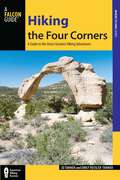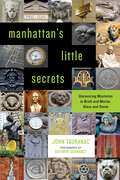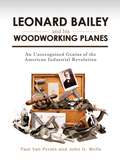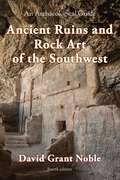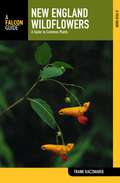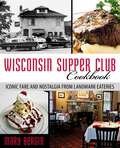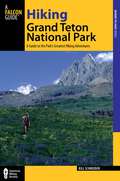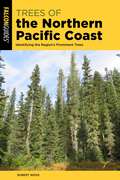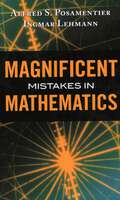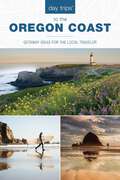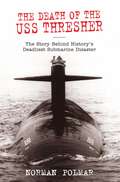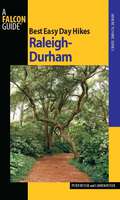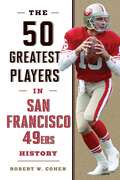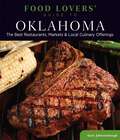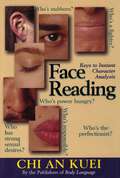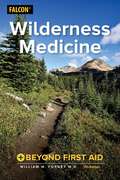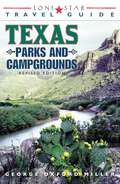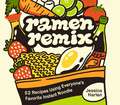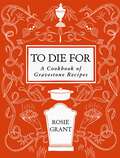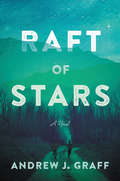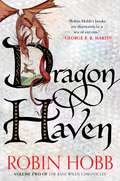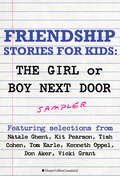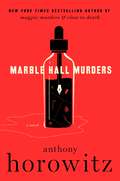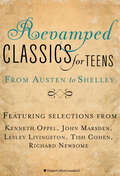- Table View
- List View
Hiking the Four Corners: A Guide to the Area's Greatest Hiking Adventures (Regional Hiking Series)
by JD Tanner Emily Ressler-TannerHiking the Four Corners offers day hikes and is encouraged for visitors, locals looking for fun challenges, and families wanting to hike together. Every hike includes prominent landmarks, GPS coordinates and waypoints, detailed hike descriptions and maps, and easy-to-find trailhead directions, along with excellent full-color photos portraying the amazing scenery that makes up the Four Corners. This guide includes everything from serene high plains desert hikes in New Mexico and Arizona to trails that take hikers back through time as they reach the ancient ruins in the Utah canyons. Hikers will be directed to popular Colorado 14,000 foot peaks and less known hidden treasures in northwest New Mexico.Look inside to find: • Mile-by-mile directional cues • Difficulty ratings, trail contacts, fees/permits, and best hiking seasons • Invaluable trip-planning information, including local lodging and campgrounds • Full-color photos throughout
Manhattan's Little Secrets: Uncovering Mysteries in Brick and Mortar, Glass and Stone
by John TauranacDiscover the whos, the whats, the whys and hows of social history that make the city come alive.A sarcophagus sits in a public parkStones from the dungeon that imprisoned Joan of Arc support a statue of herA Star of David adorns a Baptist churchA fire-breathing salamander decorates a firehouseA stained-glass window relates an architect&’s frustrationsThese are the details that guidebooks usually ignore and passersby ordinarily overlook. Curious readers will delight in revelations of history hidden in plain sight, alongside stunning photography of Manhattan&’s overlooked treasures.
Leonard Bailey and his Woodworking Planes: An Unrecognized Genius of the American Industrial Revolution
by Paul Van Pernis John G. WellsNew Englander Leonard Baileywas one of the inventive geniuses of theAmerican Industrial Revolution. His designs and patented inventions solvedproblems with woodworking planes that had plagued craftsmen for centuries. Hisplanes allowed woodworkers to transition from the age of wooden carpenter&’splanes to modern, metallic, fully adjustable planes suitable for any kind ofwoodworking. His plane designs are still in use throughout the world and areessentially unchanged from the planes he first made in the 1860&’s. He deservesmore credit than he has received among America&’s great inventors.This book covers the thirty-two-year period in Leonard Bailey&’s lifebetween 1852 when he began inventing, making and selling woodworkingtools in Winchester, Massachusetts, through his years at the Stanley Rule & LevelCompany from 1869–1874, and ends in 1884 when he worked in Hartford,Connecticut, and sold his Victor Tool business to the Stanley Rule & Level Company.
Ancient Ruins and Rock Art of the Southwest: An Archaeological Guide
by David Grant NobleThis fourth edition of David Grant Noble's indispensable guide to archaeological ruins of the American Southwest includes updated text and many newly opened archaeological sites. From Alibates Flint Quarries in Texas to the Zuni-Acoma Trail in New Mexico, readers are provided with such favorites as Chaco Canyon and new treasures such as Sears Kay Ruin. In addition to descriptions of each site, Noble provides time-saving tips for the traveler, citing major highways, nearby towns and the facilities they offer, campgrounds, and other helpful information. Filled with photos of ruins, petroglyphs, and artifacts, as well as maps, this is a guide every traveler needs when exploring the Southwest.
New England Wildflowers: A Guide To Common Plants (Wildflower Series)
by Frank KaczmarekNew England Wildflowers is the most complete guide available to the common wildflowers and flowering plants found in Connecticut, Rhode Island, Massachusetts, Vermont, New Hampshire, and Maine. With habitats ranging from tidal marshes to mountains, bogs, and boreal forests, the region comprises a rich variety of botanical treasures. Botanists, naturalists, and wildflower enthusiasts alike will find much to enjoy and discover in this easy-to-use reference, which features: * Guaranteed binding—if this binding fails, the publisher will replace the book for free* Detailed descriptions and color photos of more than 300 plants, organized by color and family* An introduction to the region&’s habitats and ecology* A glossary of botanical terms* A primer on plant characteristics and identification
Wisconsin Supper Club Cookbook: Iconic Fare and Nostalgia from Landmark Eateries
by Mary BerginThe supper club is a tradition and now somewhat of a phenomenon found in the Upper Midwestern states of Wisconsin, Minnesota, Ohio, Michigan, Illinois, and Iowa. They are so retro that they are coming back in to vogue. With two books out chronicling the history of this by gone era, covering everything from the original supper clubs to the modern incarnations of the once popular genre of eating, the time is right for a cookbook featuring the famed recipes from these establishments. Midwest Supper Clubs will uncover the secrets to the food and the drinks that keep people coming back to the party any time of the day.
Hiking Grand Teton National Park: A Guide to the Park's Greatest Hiking Adventures (Regional Hiking Series)
by Bill SchneiderThis is the authoritative guide to all hiking trails—from short, easy day trips to multi-day backcountry adventures—in Grand Teton National Park, famous for its rugged beauty, abundant wildlife and spectacular mountain vistas. Located in western Wyoming, Grand Teton National Park is one of America&’s true wilderness gems.Look inside to find:• Hikes suited to every ability• Difficulty ratings, fees/permits, and best hiking seasons • A trail finder to help find just the right hike for you • Invaluable trip-planning information• Full-color photos throughout• Full-color GPS-compatible maps of each trail• GPS coordinates for all trailheads and backcountry campsitesFor more than thirty years, FalconGuides® have set the standard for outdoor guidebooks. Written by top experts, each guide invites you to experience the adventure and beauty of the outdoors.
Trees of the Northern Pacific Coast: Identifying the Region's Prominent Trees
by Robert WeissTrees of the Northern Pacific Coast is a photographic guidebook that identifies over sixty of the most prominent native and naturalized tree species of the coastal region spanning from California, Oregon, and Washington, to British Columbia and Southern Alaska. Entries for each species contains a full description that details shape and form, physical characteristics, habitat, wildlife uses and information on identifying potential signs of disease and damage. Each entry will also include multiple photographs, detailing the tree's bark, needles/leaves, seeds/pinecones and overall appearance.
Magnificent Mistakes in Mathematics
by Alfred S. Posamentier Ingmar LehmannTwo veteran math educators demonstrate how some "magnificent mistakes" had profound consequences for our understanding of mathematics' key concepts. In the nineteenth century, English mathematician William Shanks spent fifteen years calculating the value of pi, setting a record for the number of decimal places. Later, his calculation was reproduced using large wooden numerals to decorate the cupola of a hall in the Palais de la Decouverte in Paris. However, in 1946, with the aid of a mechanical desk calculator that ran for seventy hours, it was discovered that there was a mistake in the 528th decimal place. Today, supercomputers have determined the value of pi to trillions of decimal places. This is just one of the amusing and intriguing stories about mistakes in mathematics in this layperson's guide to mathematical principles. In another example, the authors show that when we "prove" that every triangle is isosceles, we are violating a concept not even known to Euclid - that of "betweenness." And if we disregard the time-honored Pythagorean theorem, this is a misuse of the concept of infinity. Even using correct procedures can sometimes lead to absurd - but enlightening - results. Requiring no more than high-school-level math competency, this playful excursion through the nuances of math will give you a better grasp of this fundamental, all-important science.
Day Trips® to the Oregon Coast: Getaway Ideas for the Local Traveler (Day Trips Series)
by Kim Cooper FindlingCalling all Oregon residents and visitors who want to hit the beach armed with an expert-driven itinerary and all the know-how to make the most of a family day trip. Day Trips to the Oregon Coast presents narrative itineraries detailing the perfect travel day in each of 21 Oregon Coast destinations, traveling north to south. Learn where to go, what to see, and what to do as a family in each region of the Oregon Coast. Insider tips, narrative anecdotes and a detailed step-by-step itinerary guide you on your next adventure.
Death of the USS Thresher: The Story Behind History's Deadliest Submarine Disaster
by Norman PolmarOn the morning of April 10, 1963, the world's most advanced submarine was on a test dive off the New England coast when she sent a message to a support ship a thousand feet above her on the surface: experiencing minor problem . . . have positive angle . . . attempting to blow . . . Then came the sounds of air under pressure and a garbled message: . . . test depth . . . Last came the eerie sounds that experienced navy men knew from World War II: the sounds of a submarine breaking up and compartments collapsing.When she first went to sea in April of 1961, the U.S. nuclear submarine Thresher was the most advanced submarine at sea, built specifically to hunt and kill Soviet submarines. In The Death of the USS Thresher, renowned naval and intelligence consultant Norman Polmar recounts the dramatic circumstances surrounding her implosion, which killed all 129 men on board, in history's first loss of a nuclear submarine. This revised edition of Polmar's 1964 classic is based on interviews with the Thresher's first command officer, other submarine officers, and the designers of the submarine. Polmar provides recently declassified information about the submarine, and relates the loss to subsequent U.S. and Soviet nuclear submarine sinkings, as well as to the escape and rescue systems developed by the Navy in the aftermath of the disaster. The Death of the USS Thresher is a must-read for the legions of fans who enjoyed the late Peter Maas's New York Times best-seller The Terrible Hours.
Best Easy Day Hikes Raleigh-Durham (Best Easy Day Hikes Series)
by Peter Reylek Lauren ReylekBest Easy Day Hikes Raleigh-Durham includes concise descriptions of the best short hikes in the area, with detailed maps of the routes. The 20 hikes in this guide are generally short, easy to follow, and guaranteed to please.
50 Greatest Players in San Francisco 49ers History (50 Greatest Players)
by Robert W. CohenThe San Francisco 49ers have one of the best records in NFL history, with 20 division championships, seven conference titles, and five Super Bowl championships. On a team with outstanding talent each year, who among its past and present players could be ranked as the 50 greatest? Who would occupy the coveted #1 spot? Jerry Rice? Ronnie Lott? Joe Montana? Steve Young? Robert Cohen has his own take on the matter and, in a book that is bound to inspire conversation if not controversy, ranks who he believes are the greatest players from 1 to 50, with 25 honorable mentions.
Food Lovers' Guide to® Oklahoma: The Best Restaurants, Markets & Local Culinary Offerings (Food Lovers' Series)
by Katie JohnstonbaughThe Best Restaurants, Markets & Local Culinary Offerings The ultimate guides to the food scene in their respective states or regions, these books provide the inside scoop on the best places to find, enjoy, and celebrate local culinary offerings. Engagingly written by local authorities, they are a one-stop for residents and visitors alike to find producers and purveyors of tasty local specialties, as well as a rich array of other, indispensable food-related information including:• Favorite restaurants and landmark eateries• Farmers markets and farm stands• Specialty food shops, markets and products• Food festivals and culinary events• Places to pick your own produce• Recipes from top local chefs • The best cafes, taverns, wineries, and brewpubs
Face Reading: Keys to Instant Character Analysis
by Chi An KueiHow often have you taken one look at someone and &‘known&’ that they were not to be trusted? Or conversely, instantly been sure that some new acquaintance was someone who was going to be your friend? You &‘know&’ because you can instinctively see their character in their faces.The art of reading faces has been practiced in China for thousands of years. Now, with the help of this step-by-step guide, anyone can learn how to interpret different facial characteristics and acquire and instant knowledge of a person&’s character, feelings, hidden desires, state of health, and mood.Everything is written in the face. High cheekbones, a pointed chine, flaring eyebrows or a turned-up nose all have specific meanings. Once you have learned how to interpret them you will gain greater self-knowledge and a deeper understanding of your friends, colleagues and partners. Your new insights will enable you to form more successful relationships and will give you the advantage in business dealings and interviews. You will know at once whether a person is trustworthy or has bad intentions, and your first impressions will be supported by the clear evidence in the face confronting you.Clear and practical, Face Reading includes 180 illustrations showing you all the facial features with detailed explanations of their meaning. Reading faces is entertaining and fun, but it is no mere party game; it will change your whole perception of the people around you as well as yourself.
Wilderness Medicine: Beyond First Aid
by William W. Forgey M.D.Now fully revised and updated, Wilderness Medicine: Beyond First Aid is essential reading for any trail user, from trip leaders and guides to EMTs and paramedics. You&’ll learn vital skills, such as:How to survey, assess, and stabilize the victim and the medical situationHow to manage physical symptomsWhat questions to ask to gain necessary vital informationHow to care for woundsand orthopedic injuries, and much morePacked with useful information, Wilderness Medicine is the ultimate resource for anyone faced with providing immediate care when access to a medical facility is difficult or impossible.
Lone Star Guide to Texas Parks and Campgrounds
by George Oxford MillerThis up-to-date guidebook is just the ticket for campers, hikers, mountain bikers, horseback riders, birdwatchers, nature photographers, and folks who just like to enjoy the outdoors. It offers all the details to every state and national park, recreation area, national forest, and historical park in Texas. Where appropriate, maps are provided to identify specific campsites within the larger parks, and "at a glance" charts provide a quick and easy way to determine the extent of such amenities as showers, flush toilets, electricity, etc. The unique features of each park or campground are described, as well as the recreation available, be it boating or bird watching. Whether it's for a Saturday getaway or a two-week vacation, this handy book is a great guide to outdoor fun in Texas.
Ramen Remix: 52 Recipes Using Everyone's Favorite Instant Noodle
by Jessica HarlanDiscover the true versatility of instant ramen noodles with over 50 innovative recipes for soups, salads, desserts, snacks, and more!Instant ramen makes for a great and easy meal on its own, but have you ever wondered about the possibilities it holds? Have you ever considered doing more than simply dumping the package and some hot water into a bowl and calling it a day? Ramen Remix will school you in the art of noodle-based cooking with its 52 innovative and creative ramen-based recipes for soups, salads, desserts, snacks, and more. Decorated with beautiful anime-inspired illustrations, Ramen Remix provides quick and easy tips, tricks, and recipes to create unique dishes like: Ramen Pan Pizza Ramen Bolognese Bacon, Egg, and Noodle Scramble Thai Basil Spring Rolls Chocolate Peanut Haystacks And more! Perfect for college students, ramen enthusiasts, and anime fans alike, Ramen Remix contains all the quick-and-easy recipes you need to transform a regular old pack of ramen noodles into a remarkably delicious meal.
Fantasy Adventures For Kids Sampler: Dragons and Mermaids
by VariousCapture a child’s imagination with this selection of quality fantasy adventure stories from HarperCollins Canada’s award-winning list. These books have been carefully selected for their sense of humour, fast-paced action, and kid appeal. In this sampler you’ll find a range of adventures, including a journey to an underwater kingdom, a classic hero’s tale of a boy and his dragon, and a world in which magical folk have been reduced to working mundane jobs, like delivering pizza by magic carpet. Featuring samples from THE LAST DRAGONSLAYER by Jasper Fforde, THE SERPENT’S EGG by J. Fitzgerald McCurdy, INGO by Helen Dunmore, and DRAGONFIRE by Karleen Bradford.
To Die For: A Cookbook of Gravestone Recipes
by Rosie GrantAn inspiring collection of recipes preserved on gravestones, with fascinating interviews from the families, celebrating the beloved food legacies of their dearly departed.For so many, food is a touching, nostalgic thing that brings us together. So much so that some families choose to remember their loved ones through the dishes they made and the food that brought comfort to those around them by immortalizing their recipes on their gravestones.Rosie Grant, the creator behind @GhostlyArchive, has been searching out and documenting this interesting phenomenon. In To Die For, Rosie collects 40 recipes she’s found across the globe, carved into headstones or associated with a grave that has a story to share. Each recipe is accompanied by an interview with the remaining family, plus photography of the food, the gravestone, and any memorabilia the family wanted to share. Recipes include:Spritz CookiesHomemade FudgeChicken SoupFrench Silk PieGuava Cobbler…and more!Thoughtfully and respectfully explored, Rosie has documented this connection between food, legacy, and family, remembering the deceased through the recipes they most loved, and giving their families a platform to share their loved one’s story and cherished dish with the world.
Raft of Stars: A Novel
by Andrew J. Graff“A rousing adventure yarn full of danger and heart and humor.” —Richard RussoAn instant classic for fans of Jane Smiley and Kitchens of the Great Midwest: when two hardscrabble young boys think they’ve committed a crime, they flee into the Northwoods of Wisconsin. Will the adults trying to find and protect them reach them before it’s too late?It’s the summer of 1994 in Claypot, Wisconsin, and the lives of ten-year-old Fischer “Fish” Branson and Dale “Bread” Breadwin are shaped by the two fathers they don’t talk about.One night, tired of seeing his best friend bruised and terrorized by his no-good dad, Fish takes action. A gunshot rings out and the two boys flee the scene, believing themselves murderers. They head for the woods, where they find their way onto a raft, but the natural terrors of Ironsforge gorge threaten to overwhelm them.Four adults track them into the forest, each one on a journey of his or her own. Fish’s mother Miranda, a wise woman full of fierce faith; his granddad, Teddy, who knows the woods like the back of his hand; Tiffany, a purple-haired gas station attendant and poet looking for connection; and Sheriff Cal, who’s having doubts about a life in law enforcement.The adults track the boys toward the novel’s heart-pounding climax on the edge of the gorge and a conclusion that beautifully makes manifest the grace these characters find in the wilderness and one another. This timeless story of loss, hope, and adventure runs like the river itself amid the vividly rendered landscape of the Upper Midwest.
Dragon Haven: Volume Two of the Rain Wilds Chronicles (Rain Wilds Chronicles #2)
by Robin Hobb“A full master of the epic fantasy.”—Tulsa WorldOne of the world’s most acclaimed fantasists, New York Times bestselling author Robin Hobb returns to the world of her popular “Tawny Man” trilogy with Dragon Haven—the second book, following Dragon Keeper (“Imaginative, literate, and compassionate from first page to last” —Booklist) in an epic adventure about the resurgence of dragons in a world that both needs and fears them. Hobb, whose Soldier Son Trilogy (Shaman’s Crossing, Forest Mage, Renegade’s Magic) has won raves from critics, fans, and peers alike, returns to the Rain Wilds with Dragon Haven, and readers of Raymond Feist, Terry Brooks, and Lois McMaster Bujold will eagerly follow.
Friendship Stories For Kids Sampler: The Girl or Boy Next Door
by VariousThis collection of funny, heartwarming stories features a range of friendships. A boy bonds with a baby chimp, a girl moves to a remote island and discovers new friends, the daughter of a Hollywood A-lister travels to her mother’s remote hometown and connects with her long-lost relatives, three siblings come together to care for a pet horse. These gentle, quality stories are perfect for readers who like real-life adventures and a thoughtful premise. Featuring samples from ALL THE WAY HOME by Natale Ghent, THE WHOLE TRUTH by Kit Pearson, SWITCH by Tish Cohen, HALF BROTHER by Kenneth Oppel, THE HAT TRICK by Tom Earle, THE SPACE BETWEEN by Don Aker, and NOT SUITABLE FOR FAMILY VIEWING by Vicki Grant.
Marble Hall Murders: A Novel (Susan Ryeland Series #3)
by Anthony HorowitzMurder links past and present once again in this mind-boggling metafictional mystery from Anthony Horowitz—another tribute to the golden age of Agatha Christie featuring detective Atticus Pund and editor Susan Ryland, stars of the New York Times bestsellers Magpie Murders and Moonflower MurdersEditor Susan Ryeland has left her Greek island, her hotel, and her Greek boyfriend, Andreas, in search of a new life back in England.Freelancing for Causton Books, she’s working on the manuscript of a novel, Pund’s Last Case, by a young author named Eliot Crace, a continuation of the popular Alan Conway series. Susan is surprised to learn that Eliot is the grandson of legendary children’s author Marian Crace, who died some fifteen years ago—murdered, Eliot insists, by poison.As Susan begins to read the manuscript’s opening chapters, the skeptical editor is relieved to find that Pund’s Last Case is actually very good. Set in the South of France, it revolves around the mysterious death of Lady Margaret Chalfont, who, though mortally ill, is poisoned—perhaps by a member of her own family. But who did it? And why?The deeper Susan reads, the more it becomes clear that the clues leading to the truth of Marian Crace’s death are hidden within this Atticus Pund mystery.While Eliot’s accusation becomes more plausible, his behaviour grows increasingly erratic. Then he is suddenly killed in a hit-and-run accident, and Susan finds herself under police scrutiny as a suspect in his death.Three mysterious deaths. Multiple motives and possible murderers. If Susan doesn’t solve the mystery of Pund’s Last Case, she may well be the next victim.
Revamped Classics For Teens Sampler: From Austen to Shelley
by VariousHelp your teen step into classic literature with this sampler of revamped classics written especially with a teen audience in mind. These popular authors have taken their cues from such classics as FRANKENSTEIN, HAMLET, A MIDSUMMER NIGHT’S DREAM, EMMA, and classic Arthurian legends, maintaining the literary integrity and intentions of the originals but infusing them with drama, action, and contemporary language sure to engage modern readers. Teens don’t need to be familiar with the original stories, but we bet these accessible novels will make them seek out the originals. Featuring samples from THIS DARK ENDEAVOUR by Kenneth Oppel, HAMLET & OPHELIA by John Marsden, WONDROUS STRANGE by Lesley Livingston, THE ONE AND ONLY ZOE LAMA by Tish Cohen, and THE BILLIONAIRE’S CURSE by Richard Newsome.
